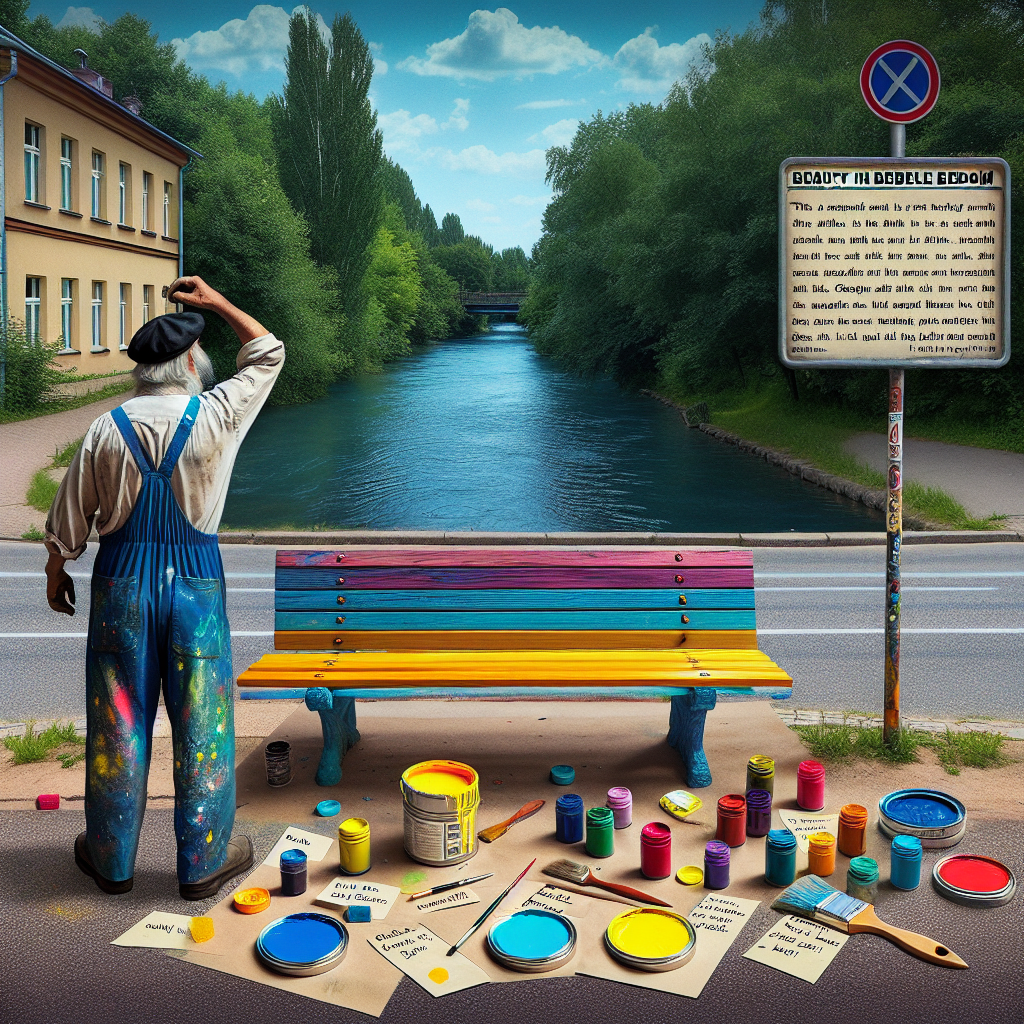**"Brushstrokes of Rebellion: The Mystery of Chesterburgh’s Colorful Benches"**

It started with a simple question scribbled on a café napkin: “Who’s been repainting the old benches by the river?” In Chesterburgh, where the past and present often collide in curious ways, this was no small mystery. Over the past month, residents have noticed the once-faded wooden benches along Mill Creek sporting fresh coats of paint—bright blues, sunny yellows, and even a striking turquoise that looks like it belongs more in a tropical beach town than our quiet, tree-lined streets.
I first spotted the freshly painted bench on a morning jog, the sun casting golden slats across the rippling water. It seemed an odd burst of color among the stubborn browns and greens of late spring. Normally, these benches blend into the background, chain-smoked and graffiti-tagged reminders of simpler times. But now? They stood out like unwelcome salon highlights in a small town full of natural hues.
Curiosity piqued, I poked around. My first stop was the Chesterburgh Parks Department. I was greeted with cautious smiles and tightly worded responses. Apparently, “no official maintenance was planned for the benches.” No contracts had been signed, no purchases logged. The freshly applied paint was unauthorized, an enigma in itself.
Local handyman and retired city worker, Jack Hensley, claimed ignorance. “Not my doing,” he said, shaking his head as he wiped a grease-stained hand on his overalls. “Looks good, though. Whoever’s at it’s got some decent taste.” His casual approval only deepened the mystery: someone had invested time, materials, and effort into public property without so much as a community bulletin.
What’s unusual here isn’t merely the unexpected brushstrokes but the choice of colors. Usually, when Chesterburgh spruces up public spaces, it’s a muted affair: deep forest greens, a slate gray or two, maybe a responsible colonial red. But these blues and yellows and that assertive turquoise? Not the typical conservative palette found in city budgets and old town committees.
Conversations at the Chesterburgh Coffee Corner—a local hub for spirited debate—unearthed divided opinions. Some residents welcomed the splash of color. “It’s refreshing,” touted Marcy Lennox, a third-generation Chesterburgh native, sipping her chamomile tea. “We don’t have to live in a sepia-toned postcard forever.” Others, however, thought it an act of mild vandalism, a disruption to the town’s carefully curated Americana aesthetic.
What really complicates the story is the timing. The town council had recently debated a “Heritage Aesthetic Ordinance,” aiming to restrict groups from making unsanctioned changes to historical public spaces. The benches, installed in the 1930s and rumored to have been designed by a relatively unknown local craftsman, fall into that category. If this was an innocuous act of beautification, it inadvertently clashes with bureaucratic red tape and contested histories.
Equally bizarre was the discovery near the newly painted benches: small, handwritten notes tucked underneath some of the slats. They were unsigned, printed neatly on index cards. One read, “Beauty in rebellion is still beauty.” Another boldly stated, “Color is freedom. No permission needed.” These cryptic missives suggest not just defiance but a deeper commentary on who controls public space and how art is allowed to exist outside official channels.
Digging deeper, I found whispers of a local collective calling themselves “Brush & Banter.” Officially, they don’t exist in records, social media, or tax filings—much like a whisper on the wind. But locals describe them as a group of artists, activists, and even retired schoolteachers who gather after dark to leave their marks on the city’s most overlooked canvases. To some, they are visionary rebels; to others, pesky graffiti artists.
It’s tempting to romanticize the “Brush & Banter” story, but what’s truly fascinating is how this small act of repainti
